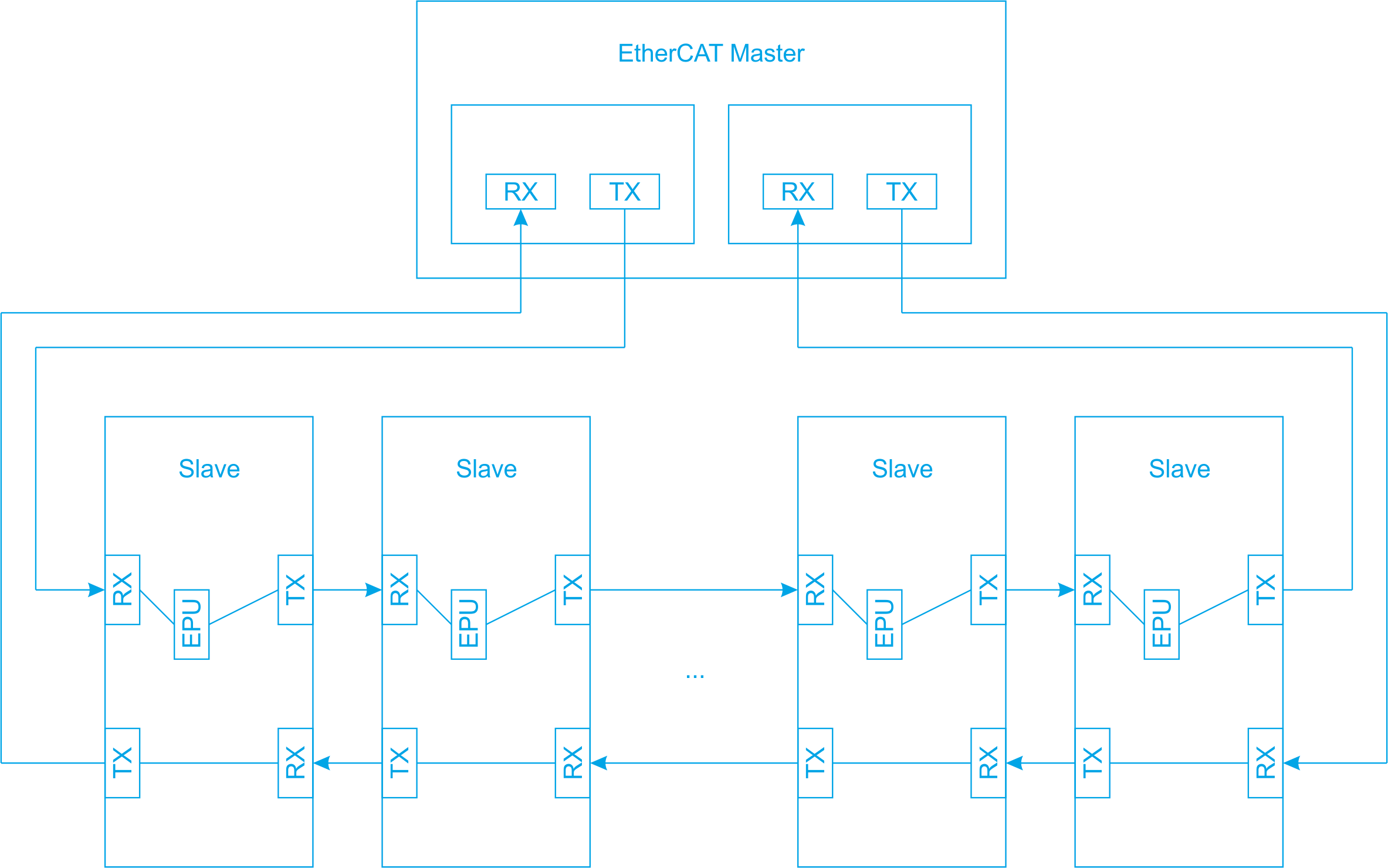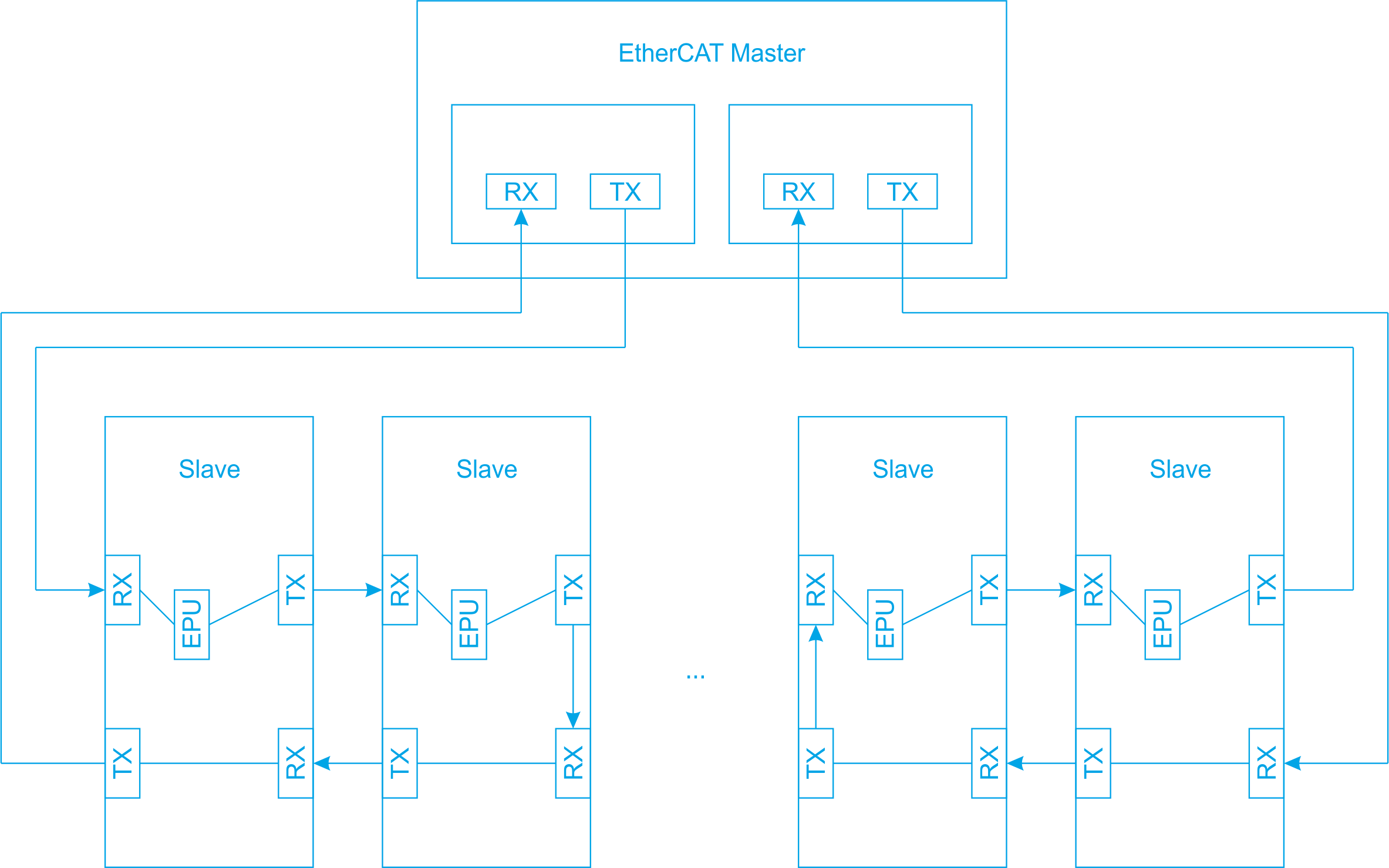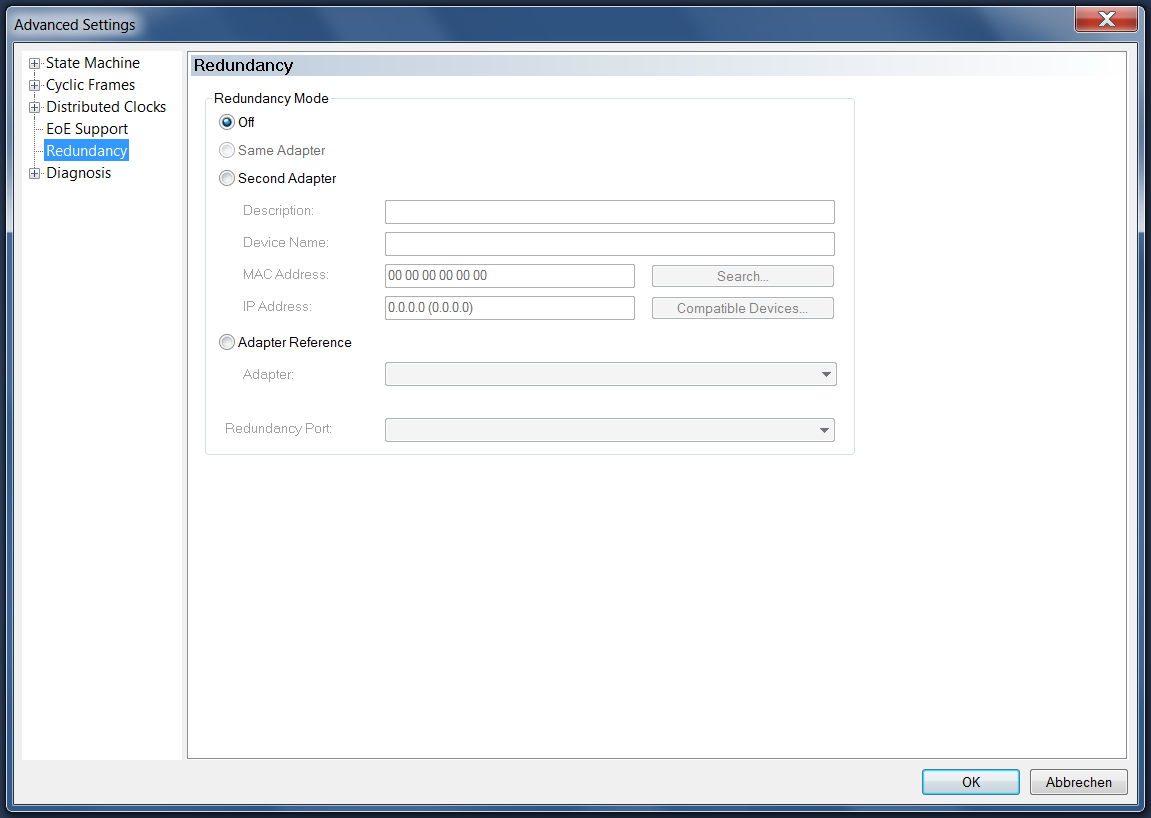Redundancy Mode
Redundancy Mode
The EtherCAT Processing Unit (EPU) is the logical core of an EtherCAT slave controller. It contains registers, memories and data processing elements. A frame always comes from port A before passing through the EtherCAT Processing Unit. It receives, analyzes and processes the EtherCAT data stream.

Cable redundancy can only be implemented within a ring topology. A second network adapter is required for this. In redundancy mode, each of the two adapters simultaneously sends a frame that is initially identical to the other frame. If a frame passes through the EtherCAT Processing Unit of a slave device, it can exchange data with the associated device via the EPU.
A frame from one adapter, which passes through port A as an input port, exchanges data with a slave device via the EPU. A frame from the other adapter within the ring topology that sees a port other than port A as the input port is not filled with data from a slave device. On the way from port A to port B a frame can exchange data with a slave device via the EPU, on the way from port B to port A a frame receives no data from a slave device.
If there is no cable fault in the network with ring topology, a frame with information from the slaves arrives at one adapter and a frame arrives at the other adapter that looks like it was originally sent, as long as the latter frame has not passed through port A as an input port.

If there is a cable fault, the ring topology is abandoned. Because the ring topology in the network is now missing, it is no longer a redundant network once a cable fault has occurred. However, the original simple redundancy now comes into play and ensures that the network continues to function within the original ring topology. The two initially identical frames from the two adapters each move to the port directly before the cable fault, and from there back to the adapters from which they originated.
Starting with an adapter, one of the frames passes through port A as input port up to the port directly before the cable fault and exchanges data with the slaves via the EPU, provided slaves are present along its route. This frame moves from the port before the cable fault back to its adapter from which it came. On its way back, this frame receives no further data from the slaves.
Starting from the other adapter, the frame that was sent in parallel on its way to the port directly before the cable fault sees a port that is different from port A as the input port and receives no data from the slaves via the EPU. From the port before the cable fault, this frame also moves back to the adapter from which it came. On its way back, the frame passes through port A as input port and exchanges data with the slaves via the EPU, provided slaves are present on its way back.
In the end, both frames, i.e. the frame originating from the first adapter and the frame originating from the second adapter, have jointly supplied all slave devices with data and fetched data from them.

Redundancy Mode
Off: If this option is selected, redundancy mode is switched off.
Same Adapter: The "Same Adapter" option currently has no function and is always grayed out.
Second Adapter: If this option is selected, redundancy mode is enabled. The "Second Adapter" option is used to implement cable redundancy.
The second adapter can be located on another PCI network card, for example. It can be a network port of a CX device, possibly on an additional card. The second adapter can also be on an external port multiplier.
Description: Contains the virtual device name of the second adapter.
Device Name: Contains the device name of the second adapter.
MAC Address: Contains the MAC address of the second adapter.
Search…: The "Search…" button opens a dialog in which all compatible devices are displayed and offered for selection. If there is only one compatible device, the dialog does not open, but the compatible device is selected as the second adapter.
IP address: Contains the IP address of the second adapter.
Compatible Devices…: The "Compatible Devices…" button opens the same dialog as the entry "TWINCAT\ Show Real-time Ethernet Compatible Devices…" in the main menu. The dialog helps to determine whether compatible Ethernet adapters are available in the system.
Adapter Reference: If this option is selected, redundancy mode is switched on. The Ethernet adapter selected via a reference is used to implement cable redundancy.
Adapter: If a compatible adapter exists as a device in the configuration, it can be selected as the reference adapter from the drop-down list.
Redundancy Port: The redundancy port is the Ethernet port of an EtherCAT slave to which the second adapter or the adapter selected via a reference is connected. Depending on the topology, you can choose between one or more ports. It is important that the second Ethernet adapter or the Ethernet adapter selected via a reference is connected to exactly this port during operation. Otherwise, redundancy will not function properly.